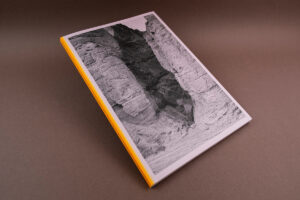YOUR CART
- No products in the cart.
Subtotal:
€ 0

Photography:
Xiaoxiao Xu
Essay:
Maria-Caterina Bellinetti
Proofreading:
Joy Phillips (The Language Collective)
Design:
Rob van Hoesel
Cartography:
Mandy Peeters
Carel Fransen (data)
Scans:
Fotolab
Lithography:
Marc Gijzen
Production:
Jos Morree (Fine Books)
Print and binding:
Wilco Art Books (NL)
Supported by:
Mondriaan Fund
For Watering My Horse, Xiaoxiao Xu (CN/NL) followed the lives of the people along the foot of the Great Wall of China, a road trip of 25,000 kilometers. Contrary to what many people think, the Great Wall is not a single continuous construction, but rather a collection of walls and towers built during various Chinese dynasties. Xu follows the section of the wall from the Ming dynasty and takes us to the ruins of the older parts. Despite the decline, there is a lively relationship with the wall among the local population that honour and protect the wall.
Xu tried to discover the impact of fast-growing China on this historic site. What does the wall reflect today? Which elements have disappeared and which remnants have survived? She discovered that the villages at the foot of the Great Wall are some of the last places where people still live according to old traditions, but here too, these are gradually disappearing. Her work focuses on the visual transformation of this process. From place to place she tries to catch a glimpse of the past.
The book contains an essay by Maria-Caterina Bellinetti (US). She is a writer and art historian specialized in photography, Chinese visual culture and propaganda. In her essay she writes about the wall as a symbol and connections the work of Xiaoxiao to the history of the wall.
Xiaoxiao Xu (1984), born in Qingtian in southeastern China, moved to the Netherlands during her teenage years. This transition and living half of her life amid a different culture has broadened her perspective. Her photography, which navigates the delicate line between documentary and autonomous work, reflects her dual perspective as both insider and outsider. Xu graduated cum laude from the Photo Academy Amsterdam and has since exhibited her work internationally in museums and festivals, with exhibitions at venues such as the Times Museum in Guangzhou, the Stedelijk Museum in Amsterdam, and the International Red Cross and Red Crescent Museum in Switzerland. Xu has been recognized with numerous awards and nominations, including the Lucie Photo Book Prize and the Jimei × Arles Women Photographers Award. Her books have received critical acclaim, with Shooting the Tiger being honored among the Best Dutch Book Designs in 2023, and Aeronautics in the Backyard selected as one of the best photo books by De Volkskrant and The Guardian.
“Ultimately, this isn’t really a book about the Wall. Watering One’s Horse isn’t about seeing the wall, it’s about the wall as a space through which one travels, sees and learns. Xu is a traveller here, as much as she shows the wall, she is really showing how the past relates to the present (and where it doesn’t) using travel as a method to uncover what endures and remains.” (Matte Dunne)